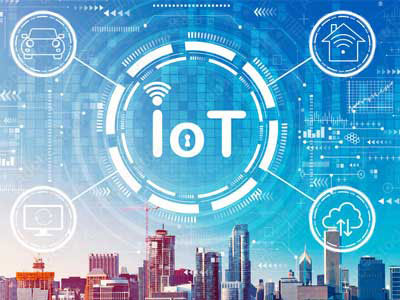Key Takeaway
Industrial IoT (IIoT) is an ecosystem of devices, sensors, applications, and networking equipment. It collects, monitors, and analyzes data from industrial operations. IIoT improves efficiency, reduces downtime, and enhances productivity. For example, it enables predictive maintenance by detecting equipment issues before they cause failures. IIoT also optimizes energy use and supports smart manufacturing. Additionally, connected supply chains benefit from real-time tracking and coordination. Overall, IIoT transforms traditional industrial processes into more efficient, reliable, and intelligent systems, driving innovation and competitiveness.
Real-Time Monitoring and Control
In the industrial sector, real-time monitoring and control are crucial for maintaining efficiency and productivity. IIoT enables the continuous monitoring of equipment and processes through sensors and connected devices. These devices collect data on performance, conditions, and operational metrics, transmitting it to central systems for real-time analysis. For instance, in a manufacturing plant, IIoT can track machine performance, identify anomalies, and automatically adjust operations to prevent downtime. This immediate feedback loop ensures optimal functioning, reduces manual interventions, and enhances overall process control.

Predictive Maintenance
Predictive maintenance is a transformative application of IIoT, enhancing traditional maintenance methods. Rather than relying on scheduled checks, which can be inefficient and costly, IIoT uses data analytics and machine learning to predict equipment failures or necessary servicing. Sensors on machinery monitor parameters such as vibration, temperature, and pressure. By analyzing this data, patterns indicating potential issues are identified. This proactive approach allows maintenance teams to address problems before they escalate, minimizing unplanned downtime, extending equipment life, and reducing maintenance costs. Predictive maintenance ensures smoother operations and better resource management.
Implementing predictive maintenance leads to significant benefits for industries. With real-time monitoring and data analysis, maintenance activities become more efficient and effective. Equipment failures are anticipated and prevented, reducing the frequency and severity of breakdowns. This not only extends the lifespan of machinery but also enhances overall productivity. Additionally, by addressing maintenance needs promptly, companies can avoid the high costs associated with emergency repairs. Predictive maintenance represents a strategic investment in operational reliability and cost savings, providing a competitive edge in today’s fast-paced industrial landscape.
Supply Chain Optimization
IIoT significantly optimizes supply chain management by providing real-time visibility into every stage. This technology helps companies make informed decisions with smart sensors and RFID tags that track the movement of goods, monitor inventory levels, and manage logistics. Real-time data allows for better demand forecasting, inventory management, and route optimization. For example, a company can quickly identify and address bottlenecks or delays in the supply chain, ensuring timely deliveries. IIoT-driven supply chain optimization enhances efficiency, reduces costs, and improves customer satisfaction by ensuring products are available when and where they are needed.
The benefits of supply chain optimization through IIoT are substantial. Real-time tracking and data analytics enable companies to respond swiftly to changes in demand and supply conditions. This leads to improved inventory management, reducing both excess stock and shortages. Optimized logistics routes lower transportation costs and minimize delivery times. Furthermore, enhanced visibility across the supply chain improves collaboration between partners, leading to more synchronized operations. By leveraging IIoT for supply chain optimization, companies can achieve higher efficiency, cost-effectiveness, and customer satisfaction, maintaining a strong position in the competitive market.
Energy Management
Energy management is critical for industrial operations, both for cost savings and environmental sustainability. The Industrial Internet of Things (IIoT) enables precise monitoring and control of energy consumption across industrial facilities. Smart meters and sensors track energy usage in real time, providing detailed insights into consumption patterns. This data helps identify areas of excessive energy use and opportunities for optimization. For instance, IIoT can automate lighting, heating, and cooling systems to operate only when needed, reducing waste. Additionally, integrating renewable energy sources with IIoT systems ensures a balanced and efficient energy mix.
Effective energy management through IIoT leads to significant cost savings and a reduced carbon footprint. By leveraging these technologies, industries can optimize their energy use, ensuring that resources are used efficiently and sustainably. This not only cuts costs but also contributes to environmental sustainability. By automating energy controls and integrating renewable sources, companies can achieve a more sustainable and cost-effective operation. This approach not only supports environmental goals but also enhances the overall efficiency and reliability of industrial processes.
Industrial Safety and Compliance
Ensuring safety and compliance in industrial environments is paramount. The Industrial Internet of Things (IIoT) enhances safety measures by providing real-time monitoring and alerts for hazardous conditions. Connected sensors can detect gas leaks, temperature fluctuations, or equipment malfunctions, triggering immediate responses to prevent accidents. For example, in a chemical plant, IIoT can monitor toxic gas levels and initiate evacuation procedures if necessary. Additionally, IIoT helps maintain compliance with industry regulations by tracking and recording safety data.
Automated reporting ensures that all safety protocols are followed, and any deviations are promptly addressed. By leveraging IIoT, industries can create safer workplaces and ensure regulatory compliance. This technology not only improves safety but also builds trust with stakeholders by demonstrating a commitment to maintaining high safety standards. Implementing IIoT solutions for safety and compliance helps industries protect their workforce, avoid regulatory fines, and maintain a reputation for operational excellence.
Conclusion
The applications of Industrial IoT are vast and transformative. From real-time monitoring and predictive maintenance to supply chain optimization, energy management, and industrial safety, IIoT is reshaping industrial operations. Its ability to provide real-time insights, automate processes, and enhance decision-making makes it an indispensable tool for modern industries. Embracing IIoT not only improves efficiency and productivity but also ensures safety and sustainability. As industries continue to adopt IIoT technologies, the future of industrial operations looks smarter, more efficient, and increasingly interconnected.
